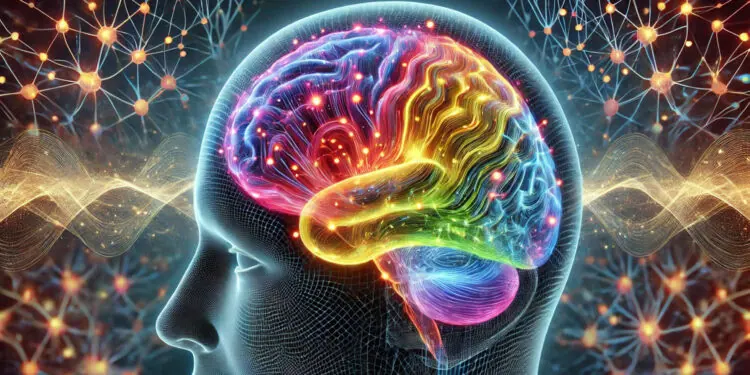Anxiety is associated with reduced activity in brain’s cognitive control network

The relationship between anxiety and brain function is clarified by a new study that was published in Psychophysiology. The study focuses on the effects of anxiety on the brain’s cognitive control network. According to the research, significant anxiety problems may be linked to decreased activity in specific brain regions, which may operate as neural markers for anxiety symptoms.
Anxiety is a global condition that impacts millions of individuals due to its hallmarks of unreasonable fear and helplessness. Severe anxiety can cause crippling diseases known as anxiety disorders, although mild anxiety can be helpful by increasing awareness of one’s environment. In addition to interfering with day-to-day functioning, these diseases are frequently associated with other mental health conditions, most commonly depression.
Developing effective treatments for anxiety disorders requires an understanding of the brain mechanisms underlying these disorders. Prior studies have demonstrated a connection between anxiety and alterations in brain activity, namely in the frontal cortex; however, the results have been mixed. While some studies have identified greater activity or alterations in the brain’s functional connectivity, others have observed decreased neural activity. In order to separate the effects of anxiety on brain function, this study focused on those who had anxiety but not depression in an effort to explain these differences.
Between September 2020 and May 2023, 366 volunteers were recruited by the researchers from Huazhong University of Science and Technology in Wuhan, China. The Hospital Anxiety and Depression Scale (HADS) was used to screen participants and make sure their depression levels were within normal ranges. After that, they were divided into three groups according to the severity of their anxiety: healthy controls, people with mild anxiety, and people with serious anxiety.
The study employed a method known as functional near-infrared spectroscopy (fNIRS) to detect brain activity. This non-invasive technique provides an indirect assessment of cerebral activity by using light to track changes in blood oxygen levels in the brain. The participants engaged in a verbal fluency task (VFT), which is known to activate the brain regions related to cognitive control and involves word generation in response to cues.
Significant variations in brain activity were seen between the groups in the study. More specifically, there was a negative relationship between the intensity of anxiety and activation in the left frontal eye fields (lFEF) and the right dorsolateral prefrontal cortex (rDLPFC). Stated differently, during the VFT, there was less activity in these regions among people who reported feeling more anxious.
When compared to healthy controls, individuals with substantial anxiety displayed noticeably less activation in the rDLPFC. In the major anxiety group, the mean concentration of oxyhemoglobin (oxy-Hb), a marker of brain activity, was 0.047, while in the control group it was 0.896. In the lFEF, comparable findings were seen; the major anxiety group’s mean oxy-Hb concentration was -1.255, while the control group’s was 0.601.
According to the research, reduced activity in these brain areas may serve as a neurological marker for severe anxiety disorders. The rDLPFC and lFEF are part of the cognitive control network, which is crucial for controlling emotions and ideas. Anxiety symptoms as an inability to regulate unrealistic worries may be caused by impaired function in this network. These findings are consistent with earlier research that connected anxiety to deficits in cognitive control, but by separating anxiety from depression, they offer more accurate proof.
The results of this study emphasize the significance of treating anxiety disorders by focusing on particular brain regions. Through comprehending the brain processes that underlie anxiety, scientists can create interventions that work better. To confirm these results, future studies should employ more thorough measures of depression and anxiety, such as the Beck Depression Inventory or the Hamilton Depression Scale.
Since the fNIRS technology employed in this study does not measure activity in deeper brain regions like the amygdala, which is also known to be implicated in anxiety, it is critical to stress that the study’s focus is limited to the frontal and temporal cortices. In order to give a more comprehensive picture of the brain mechanisms underlying anxiety disorders, future research should focus on these areas.
The study, titled “Anxiety Symptoms Without Depression Are Associated With Cognitive Control Network (CNN) Dysfunction: An fNIRS Study,” was authored by Qinqin Zhao, Zheng Wang, Caihong Yang, Han Chen, Yan Zhang, Irum Zeb, Pu Wang, Huifen Wu, Qiang Xiao, Fang Xu, Yueran Bian, Nian Xiang, and Min Qiu.




